Opel Zoo achieves full coverage throughout its 27-hectare site with KENWOOD DMR.
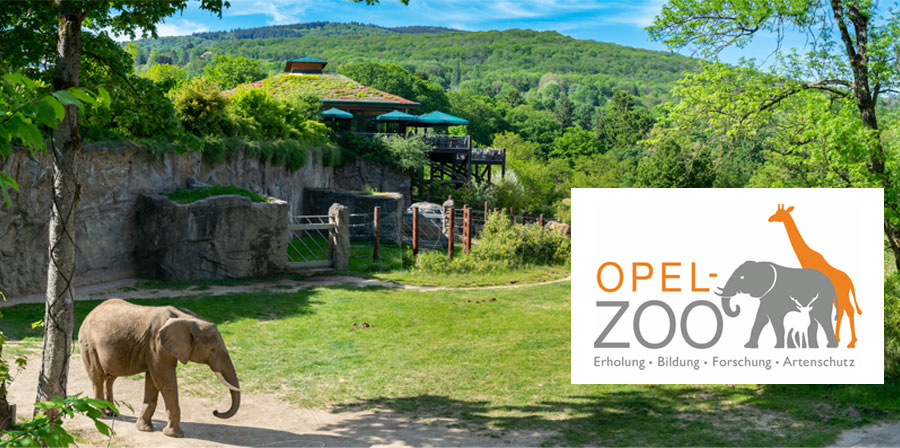
Founded by Dr. Georg von Opel as an open-air enclosure for animal research, Opel Zoo in the Rhine - Main region of Hesse is now 65 years. The zoo is home to around 1,600 animals housed in landscaped grounds covering 27-hectares and with around 750,000 visitors a year, it is one of the most visited leisure and cultural facilities in the region.
Keeping everything running smoothly on a site the size of Opel Zoo requires a powerful radio system to connect all the different areas, technicians and administrative staff. The zoo’s team is now using a KENWOOD DMR digital radio system with repeater and 35 NX-3000 Series, NX-3320E handheld radios.
Opel Zoo is situated in the middle of the scenic slopes of the Taunus foothills between the towns of Kronberg and K nigstein. It presents its animals in a unique way – in addition to the giraffes, red pandas, cheetahs and kangaroos, the main visitor attraction are the only elephants in Hesse housed in one of the largest elephant enclosures in Germany.
From as early as 1956, the founder of the zoo wanted to show the animals in social groups, in natural enclosures and, as far as possible, without visible boundaries between humans and animals.
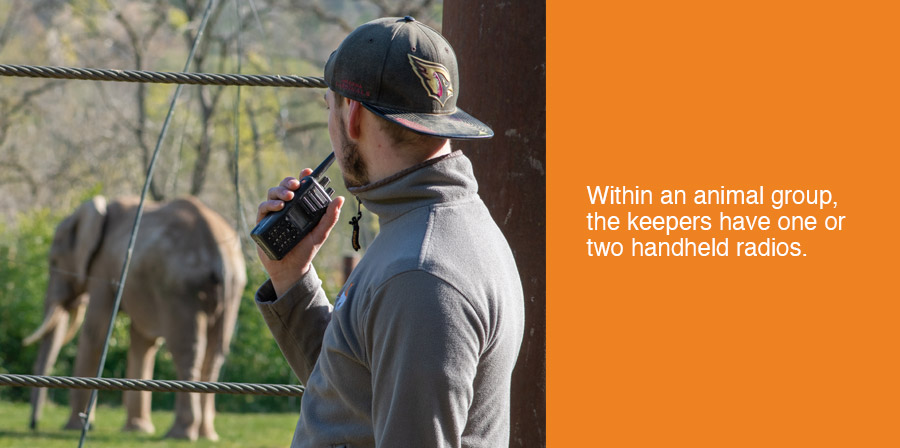
Adapted to the current communication requirements
Radios and a relay station (repeater) were already in use at the zoo, but when their leasing contract expired, the team responsible for "routine operations" looked into what was available on the market and decided on KENWOOD DMR radio.
The new system was supplied by Blickle & Scherer Kommunikationstechnik GmbH & Co. KG from Koblenz.
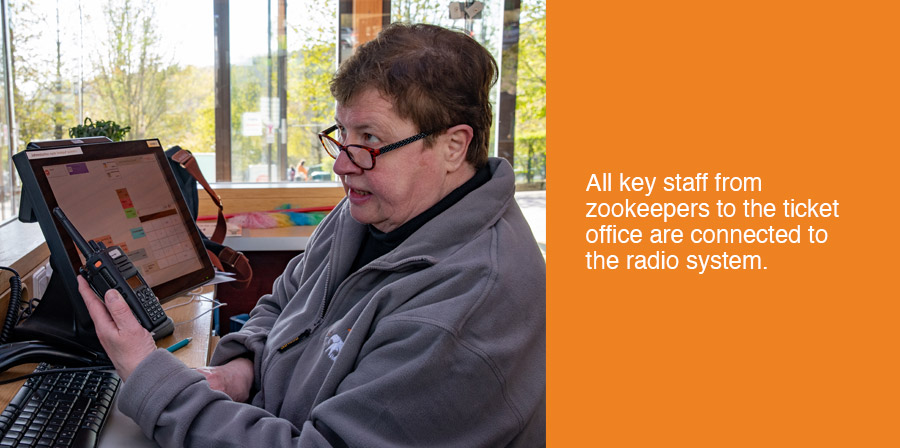
In line with the zoo's organisational structure, most of the radio equipment is assigned to various areas which mirror the ‘animal groups’ that belong together.
The zookeepers are each equipped with one or two radio devices. Rather than programme the radios to display the caller ID, they are programmed by area/function group. Each group is assigned a radio channel to enable independent communication, including administrative staff and the ticket office.
Every member of the zoo’s radio network can ‘dial’ into the individual groups through the channel selection rotary switch and join the conversation. It is possible to program up to 128 different radio groups with the KENWOOD DMR system which provides the flexibility the zoo required from its new radio system.
Many options for radio communication
Another particular advantage of these radios is the single or ‘Private Call’ feature where users enter the number of the radio they want to call. This allows one-to- one calls between colleagues without involving the whole team in the conversation. Other users on the same frequency can see that a radio conversation is taking place without having to listen in.

"When we chose the radios, we also made sure that it was possible to show missed calls." this is how Uwe B hme, the Head of Administration, describes this crucial function for him: "Sometimes when they're working with the animals in the enclosures, my colleagues can't just take a call - but they still want to know who was trying to reach them,". On KENWOOD devices, unanswered radio calls are indicated in the display by a letter symbol and a flashing yellow LED. The person who received the call can then see who was trying to reach them at what time.
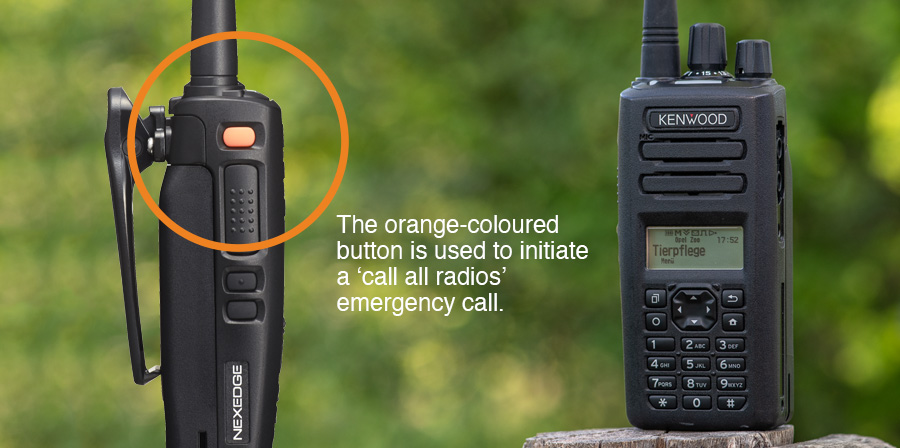
If you want to reach every device at the same time, there is the option to make a collective call. This is typically intended for warning messages - for example, if a fire is discovered or an animal has escaped from an enclosure. The orange-coloured button on the side of the hand portable radio is used to initiate a ‘call all radios’ emergency call. The NX- 3320E units also feature two status buttons below the send button for text messages, which can be programmed by the users to send a pre-set text message to every device. This ensures instant communication to everyone involved in situations which may well be rather ‘exciting!’.
Repeater placed as inconspicuously as possible
To ensure the best possible radio coverage of a site, the repeater (relay station) is usually placed at the centre of the site and at the highest point in terms of topography. In Kronberg, the optimum location for the repeater would have been on an African-style animal house. However, it was important to the aesthetics of the zoo that the KENWOOD TKR-D810E repeater and the antenna were sited in as inconspicuous a location as possible.

"You always have strike the right balance between site aesthetics and a strong radio signal," explains Uwe Kern, who supervised the project at Blickle & Scherer. In the end a building was chosen that is referred to inhouse as the "Hessian Farmhouse".
Based on field strength measurements, it was determined that the entire zoo grounds could be reached by radio from this point.
In more demanding coverage areas, KENWOOD typically sets up a test facility for its customers so that staff can become familiar with operating the radios. Checks are also carried out to see whether the full extent of a potential operational area can be covered by the radio signal. Fortunately, this was not necessary at Opel Zoo.
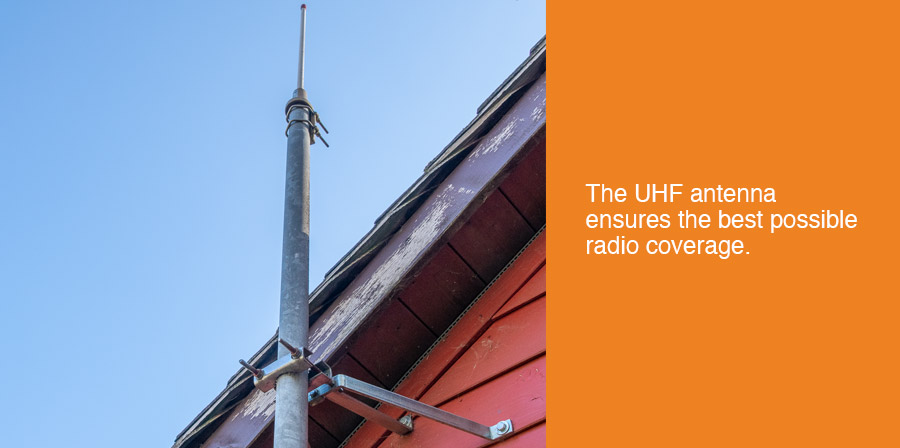
Customer orientation from delivery to training
KENWOOD provides targeted training courses that familiarise end users with how to operate their devices. At the Opel Zoo, Uwe B hme, Head of Administration was able to coach the members of his team on how to use the radios after one training session. Each device is accompanied by a user manual in 28 languages, which gives users information on the main features of the radio. "In addition to the KENWOOD manual, we also create an individual, illustrated operating manual for each customer, so they can get started quickly and with confidence" reports Uwe Kern.
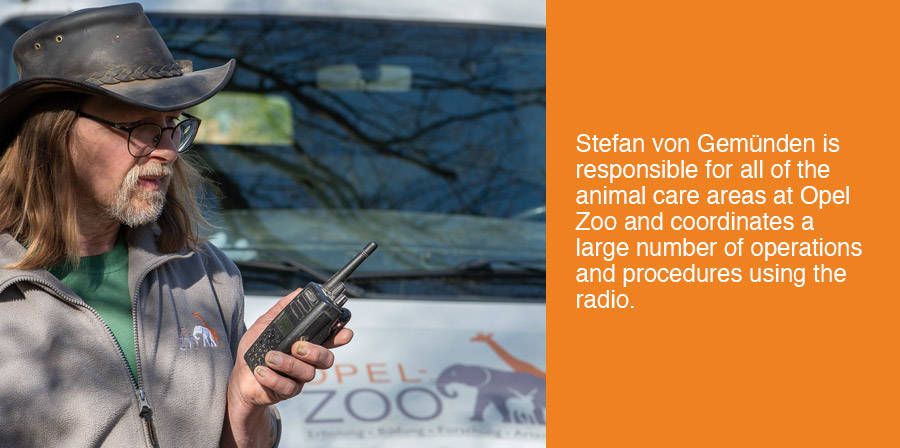
NX-3000 SERIES Versatility
The versatile, multi-protocol NX-3000 Series hand portable radios supplied to Opel Zoo support either NXDN plus FM analogue or DMR plus FM analogue operation, which means that they can be used for many applications, especially where customer requirements may change over time.
Opel Zoo has opted for digital DMR technology, in which two channels can be used in parallel thanks to its dual-slot technology. Another advantage of DMR in this application is the ability to pause calls (call interruption) between existing users when an emergency call is be received.
The NX-3000 Series devices are compact and built to last, with a range of useful features including Bluetooth for hands-free operation and GPS. There are three models to choose from: full keypad and LCD - as used in the zoo, a standard model with LCD, function keys and a large 4-way pad and the basic model without display or keypad.
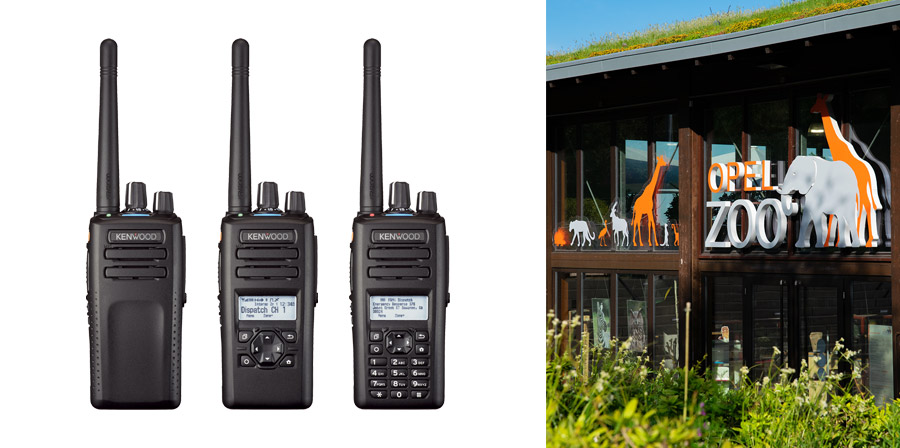
| |
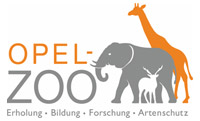
Opel Zoo
Georg von Opel - Outdoot enclosure for animal research of the
Opel Hessian Zoo Foundation
Am Opel Zoo 3
61476 Kronberg im Taunus, Germany
T: +49 (0)610 1498 8500
F: +49 (0)610 1498 8509
W: www.opel-zoo.de
|
|
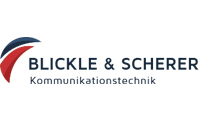
Brickle & Scherer Kommunikationstechnik GmbH & Co. KG
76149 Karlsruhe
Gewerbering 4-6, Germany
T: +49 (0)721 973 6400
F: +49 (0)721 973 6445
E: info@bsk-world.de
W: www.bsk-world.de
|